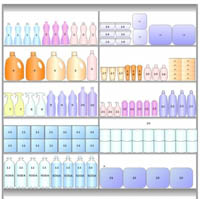Category Management
 All consumer markets of industrialized countries and now developing countries are characterized by great diversity of supply and an increasing complication in the process of products assortments by retailers. This major increase in the number of products on the shelves, which may also interfere in some cases with the store offer but also in the shopping process of consumers, has led the retailers to consider setting up a new approach to their assortment and relying on a more active collaboration with the suppliers.
All consumer markets of industrialized countries and now developing countries are characterized by great diversity of supply and an increasing complication in the process of products assortments by retailers. This major increase in the number of products on the shelves, which may also interfere in some cases with the store offer but also in the shopping process of consumers, has led the retailers to consider setting up a new approach to their assortment and relying on a more active collaboration with the suppliers.
Category Management appeared as a tool for restructuring and optimizing the assortments in a cost-effective way. This trend is part of a broader stream introduced in the United States and in Europe in the 90s called Efficient Consumer Response (ECR) which aims to redefine and restructure the supply through the acceleration of information flow and process of delivery between the retailers and the brand owners.
The supply side of ECR is not perceived by the consumer, while the demand side is referred to as category management, which includes merchandising, promotions, pricing and product mix.
The principle of category management is to group all products by universe (food, personal care, home, leisure), then by categories and sub-categories based on their complementarity and similarity. For example a mother should find in the same aisle, diapers, baby milk, baby food jars, wet wipes, kid shampoo, etc …
The key area of responsibility becomes the responsibility of the product itself. Therefore the retailers supply and purchases should be based on products grouping in coherent universe, then the management of procurement, supply chain logistics, merchandising and promotional activities in permanent liaison with the observed characteristics of the sale of the concerned products.

